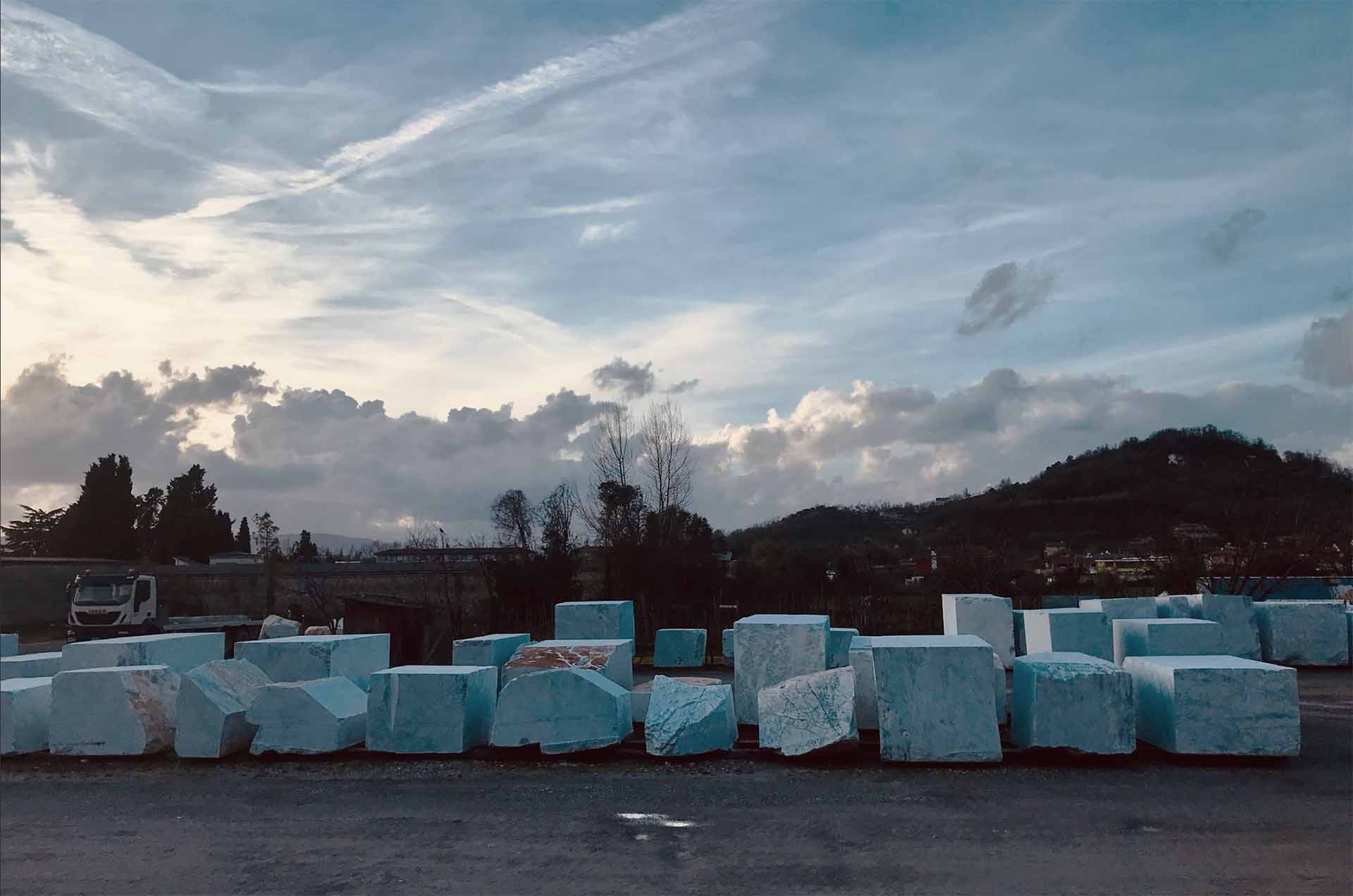Marble
OPULENCE OF INDIA
What is the feature that makes the Taj Mahal unmatched in splendor? How is it that this complex strikes every viewer, even when viewed opaquely from a mobile screen? Could it be the size? The orderly Mughal architectural design? Or perhaps the perfect blend of Indian aesthetics and Islamic beliefs?
It may be these things. But it is not.
WORTHY OF AN EMPRESS
It is the vast, polished purity of Makrana’s white marble blooming into the heavens that mesmerize visitors. The linen-white expanses perfectly contrast the verdant charbaghs and signature red sandstone paths below, leaving the viewer speechless when faced with such harmony of color.
The marble sourced for the Taj Mahal’s overlay, the dome, and the minarets come from Makrana, the site of India’s oldest marble quarry south of Jaipur, in the Nagaur district of Rajasthan. White Makrana marble is most often reserved for the beautification of a structure through statues, decorations, or overlay. Though pink and grey marble from Makrana is also available, it is the impenetrably bright white marble for which the region is famous.
Though today Makrana marble is more easily sourced from over 400 existing mines in Rajasthan, extracting and transporting the marble in the 17th century was no easy feat! It took a complicated route and intense dedication on the part of the builders to convey the precious chunks of marble from Makrana to Agra.
To reach Agra, the construction site of the Taj Mahal, a relay system of camel and elephant carts was employed and managed by stonecutters. Every twenty or so miles a marble shipment was transferred from one cart to the next. It was then transported another 20-30 miles in a fresh camel or elephant cart. Once it reached Agra, the gleaming stones were carefully placed where needed – and where their beauty would be most visible.
THE PUREST STONE
The bricks overlaying the Taj Mahal were cleanly and carefully cut – there was no repair of cracked or damaged marble bricks. This is possible because of the purity of Makrana white marble. It is only one of two calcitic marble varietals to be found in India (the rest are dolomitic). Compared to every other marble in India, Makrana marble absorbs the least water and is extremely calcium-dense. This also means that Makrana marble is unbelievably pure – in fact, 98% pure. Only 2% of the marble contains impurities. It is this hardness and chemical purity that ensures the walls, floors, and decor of Makrana marble continue to gleam throughout the centuries.
Though marble was also sourced elsewhere – Punjab, Sri Lanka, Tibet, Afghanistan, China, and the Arabian Peninsula, to name a few – it is the Makrana marble that withstood the original cutting (not to mention hundreds of years of endurance). Harder, more translucent, and more beautiful than competing marbles, the marble sourced from Makrana would become a legend among those learning of the Taj Mahal, as it was already legend with the stone cutting experts of the Mughal Empire. The years take a little toll on the marble, as it is known that Makrana’s white marble retains its moon-lit hue and color for many years.
Not only this, but it is known that Makrana marble does not need to be treated prior to cutting – it can be chiselled straight from the mine, and preserved in its unparalleled, near-flawless beauty. It has been used for the world’s most historic white marble sites, including the Jain Temple of Dilwarain, the Birla Temple of Jaipur, and – of course- the Taj Mahal. It is believed that not only was the marble quarried and carried from Makrana, but that a number of workers and artisans made the trek alongside their precious marble to Agra, to work on the Taj Mahal themselves. There is no definitive record of this, but it is believed by some.
PAST AND FUTURE BRILLIANCE
The beauty of the Taj Mahal would not be nearly as imposing if it were made of red sandstone or white plaster. No, it is the milky-white brilliance of polished white Makrana marble that has imbued the Taj Mahal with its elegant strength for hundreds of years. And any building reliant on Makrana marble might last hundreds of years more.
Though a somewhat small district, Makrana has left an indelible mark of beauty on the world. We can remember this fact every time we open a textbook, a travel agency website, or a nomad’s blog, and see yet again the blinding white brilliance of one of the world’s most unforgettable structure.


